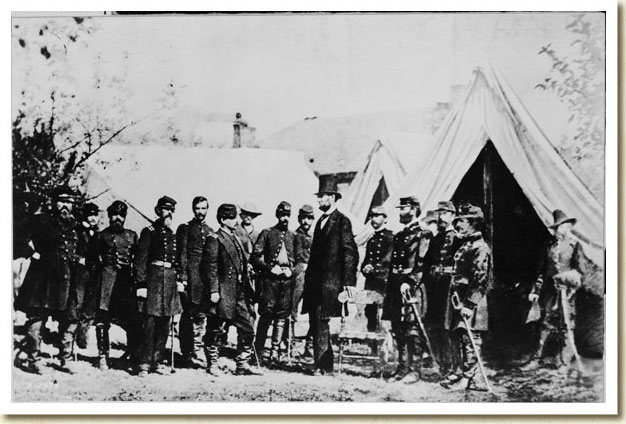During the tumultuous era of the American Civil War, communication was a critical component of military strategy and governance. At the forefront of this technological revolution was Abraham Lincoln, the 16th President of the United States, who skillfully utilized the telegraph to shape the course of the war and the nation’s destiny. Lincoln’s mastery of this cutting-edge technology not only transformed wartime communication but also established a precedent for the integration of technology into governance that continues to resonate today.
The Role of the Telegraph in the Civil War
The telegraph, invented in the early 19th century, was a revolutionary means of long-distance communication. By transmitting electrical signals over wires, messages could be sent almost instantly across vast distances, revolutionizing the speed and efficiency of communication. This technology came into its own during the Civil War, providing commanders with the ability to receive and transmit information rapidly, thereby influencing military tactics and decision-making.
For Lincoln, who assumed office in 1861 just as the conflict erupted, the telegraph became an indispensable tool. Recognizing its potential, he immediately grasped its strategic importance and set about leveraging it to his advantage. Lincoln understood that in a war where timely information and swift decision-making were paramount, the telegraph could provide a crucial edge.
Lincoln’s Approach to Using the Telegraph
Lincoln’s approach to using the telegraph was characterized by his hands-on involvement and strategic vision. Unlike his predecessors, who had limited access to real-time information, Lincoln made the telegraph office an extension of his presidency. He installed telegraph wires directly into the War Department and the White House, ensuring that he was constantly connected to developments on the battlefield and throughout the country.
Through this direct connection, Lincoln could receive updates on military engagements, monitor troop movements, and communicate directly with his generals. This enabled him to make informed decisions quickly, responding to developments on the ground with unprecedented speed for a head of state during that time.
Transforming Governance and Leadership
Lincoln’s use of the telegraph also transformed the nature of governance itself. By centralizing communication and decision-making around this technology, Lincoln established a more efficient system of administration. He was able to maintain closer oversight of military operations and coordinate strategic initiatives across multiple theaters of war simultaneously.
Moreover, the telegraph allowed Lincoln to communicate directly with his cabinet members, advisors, and political allies across the country. This facilitated the dissemination of policy directives, enabled swift responses to crises, and helped maintain political cohesion during a period of profound national crisis.
Strategic Communication and Military Command
From a military standpoint, the telegraph played a pivotal role in Lincoln’s ability to oversee and direct Union forces. By staying in constant communication with his generals, including figures such as Ulysses S. Grant and William T. Sherman, Lincoln could provide strategic guidance, convey political priorities, and adjust military objectives in real-time.
For example, during critical battles such as Gettysburg and Antietam, Lincoln used the telegraph to receive updates, issue orders, and coordinate reinforcements. His ability to communicate swiftly and decisively contributed to the Union’s overall war effort, helping to turn the tide against the Confederate forces.
Challenges and Limitations
Despite its advantages, the telegraph system during the Civil War was not without challenges. Telegraph lines were vulnerable to sabotage and disruption by enemy forces, requiring constant protection and repair. Additionally, the sheer volume of messages transmitted posed logistical challenges for operators and government officials alike.
Moreover, the telegraph’s instantaneous nature sometimes created misunderstandings or misinterpretations of information. Lincoln had to navigate these pitfalls carefully, ensuring that he received accurate intelligence and conveyed clear instructions to his commanders.
Legacy and Impact
Abraham Lincoln’s innovative use of the telegraph during the Civil War left a lasting legacy on both military strategy and presidential governance. His integration of technology into the highest levels of government set a precedent for future leaders, emphasizing the importance of staying connected and informed in times of crisis.
Furthermore, Lincoln’s approach demonstrated the transformative power of technology in shaping historical events. By embracing the telegraph, he not only enhanced the Union’s war effort but also laid the groundwork for the modernization of communication and information management in government.
Abraham Lincoln’s utilization of the telegraph during the Civil War exemplified his leadership acumen and strategic foresight. By harnessing this revolutionary technology, Lincoln revolutionized communication in wartime, enabling faster decision-making, enhancing military coordination, and transforming the nature of presidential governance.
His legacy underscores the profound impact of integrating technology into governance, a principle that remains relevant in the 21st century. Lincoln’s mastery of the telegraph serves as a testament to the enduring significance of innovation and adaptability in times of national crisis, leaving an indelible mark on both the history of the United States and the evolution of communication technology worldwide.
